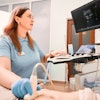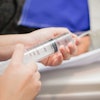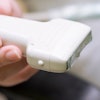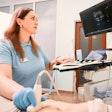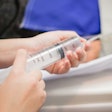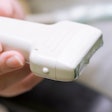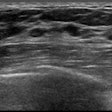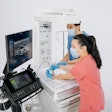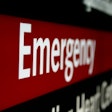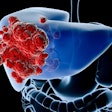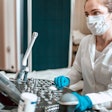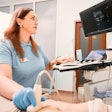Emergency physicians are capable of handling ultrasound screening for abdominal aortic aneurysm (AAA), according to researchers from Yale University in New Haven, CT.
"Emergency physicians can quickly and accurately screen for AAAs in at-risk patents, allowing for arrangement of appropriate follow-up," said Dr. Scott Holliday of Yale's section of emergency medicine. He presented the research at the 2007 American Institute of Ultrasound in Medicine (AIUM) meeting in New York City.
The Yale researchers conducted a prospective trial to study the feasibility and cost-effectiveness of screening performed by emergency physicians (EPs) on at-risk patients. The study included 179 male patients over 60 years of age with one or more risk factors for AAA, and who presented to the emergency department (ED) with an unrelated complaint.
The EPs who performed the ultrasound exam received minimum training of didactic instruction, specific instructions for an AAA exam, and had completed five studies. Studies were performed using a 3-5 MHz curvilinear probe using either an EnVisor scanner (Philips Medical Systems, Andover, MA) or a system from B-K Medical Systems of Copenhagen, Denmark.
The physicians examined the aorta from the celiac axis to the bifurcation, and rated the exam as complete, limited, or inadequate. For the purposes of the study, AAA was defined as a maximum diameter of 3 cm or more.
Those patients with AAAs were provided follow-up with a vascular surgeon, and contacted to confirm compliance. The primary investigators recorded all studies and reviewed them later for compliance.
Of the 179 patients, 77% were Caucasian, 19% were African American, and 12% were Hispanic. The average age was 73.6, and risk factors included smoking (76%), hypertension (70%), diabetes (26%), peripheral vascular disease (18%), and a family history of AAAs (3%).
The scans were rated as complete in 61% of the cases, limited in 34%, and inadequate in 4%, Holliday said. The studies were completed in an average time of 129 seconds, with a median of 103 seconds.
During the research, 13 (7.3%) AAAs were found, the sizes of which averaged 4 cm (with a median of 3.7 cm). In those patients, the average time to complete the study was 141 seconds (with a median of 138 seconds). So far, 10 of those patients have received formal imaging in follow-up, and all had AAAs with average discrepancy of 0.6 (median 0), he said.
Holliday acknowledged limitations of the study, including the small sample size, the use of a convenience sample, and reliance on only men for the study. Future research directions could involve cost modeling, as well as community outreach and awareness initiatives, Holliday said.
By Erik L. Ridley
AuntMinnie.com staff writer
May 7, 2007
Related Reading
Abdominal aortic aneurysm screening may reduce mortality in men, April 27, 2007
SVS promotes ultrasound for vascular screening, April 18, 2007
Endovascular repair of acute abdominal aortic aneurysm less costly than surgery, September 4, 2006
Horseshoe kidney AAA, August 31, 2006
Medicare to pay for AAA screenings, February 13, 2006
Copyright © 2007 AuntMinnie.com

